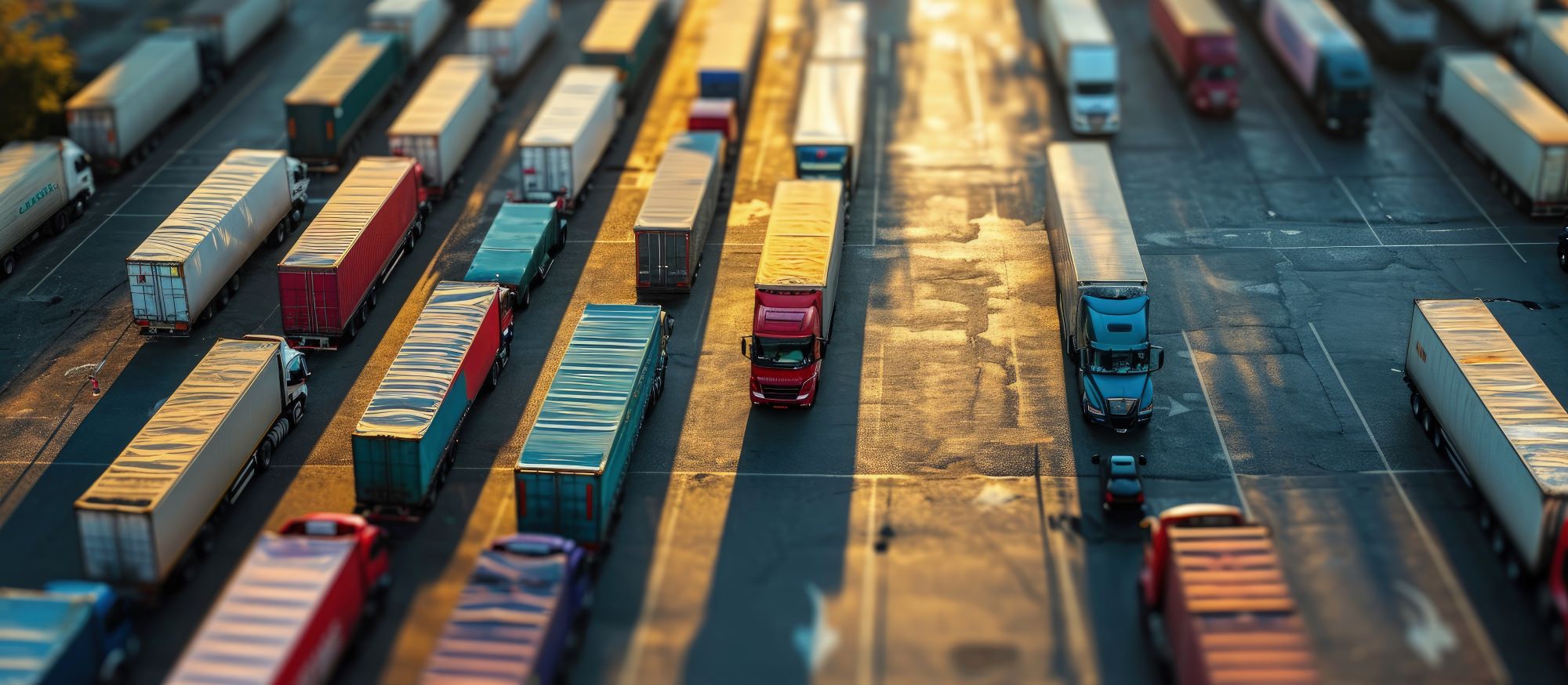
Susie Jones
The road to sustainability: The European emissions challenge within the transport sector
Created: 08. 08. 2024
•
Updated: 08. 08. 2024
A 2024 report by Clean Technica revealed over 25% of road traffic emissions come from the transport sector in Europe - with heavy-duty vehicles responsible for 85% of emissions (buses and coaches make up the remainder).
At the current rate, the transport sector alone will make up nearly half of Europe's greenhouse gas emissions in 2030 - Europe's transport emissions have continued to increase by more than a quarter since 1990. Emissions across the economy have decreased - however, since a peak in 2007, the transport sector has been decarbonising more than three times slower than the rest of the economy.
What is the cause of rising CO2 emissions in the haulage industry?
Since the proliferation of e-commerce and home delivery services, the demand for more trucks on the road has increased significantly. Consequently, increased demand has resulted in an increase in CO2 emissions within the haulage industry.
A Clean Technica report regarding domestic freight tonnage across different modes (road, rail, and water) revealed road freight was more dominant in Europe than rail and water compared to other geographies (USA and India). Although China is more reliant on road freight, the report revealed the country operated with roughly 600,000 electric trucks to deliver goods.

What plans are in place in Europe to reduce CO2 emissions?
European Parliament adopted the European Climate Law to tackle rising CO2 emissions. As part of this law, the EU target of reducing net greenhouse gas emissions by 2030 has been increased to at least 55% - making climate neutrality by 2050 legally binding.
In May 2024, EU countries approved a law to slash truck CO2 emissions. The new law will require new heavy-duty vehicles sold in the EU from 2040 to be emissions-free - while enforcing a 90% cut in CO2 emissions from new HGVs by the same year. Manufacturers must sell a large amount of fully CO2-free HGVs - for example, electric and hydrogen fuel vehicles - to offset remaining sales of CO-emitting vehicles.
What actions can fleet managers take to reduce CO2 emissions?
Fleet managers can take measures to reduce their CO2 emissions:
• Harsh braking, rapid acceleration, and idling can increase fuel consumption and greenhouse gas emissions - Although monitoring driver behaviour can be challenging, AI technology can provide continuous feedback to drivers and fleet managers. Learn more about how AI can positively impact sustainability in the haulage industry.
• Fleets with older vehicles can switch to Hydrotreated Vegetable Oil (HVO), hydrogen, or electric-powered HGVs to significantly reduce emissions. However, fleet managers must consider the distance alternative-fuelled vehicles can travel and the cost implications.
• SNAP Account allows fleet managers to reduce their detour mileage - with over 600 service partners available to SNAP Account customers, fleet managers can plan overnight stops for their drivers on route.
Is the infrastructure there to charge electric HGVs?
According to a PwC study, by 2030, a third of all trucks in Europe will be electric. As fleet companies are taking steps towards electrification, truck stops across Europe must be able to meet the demand for electric charging stations.
Providing the infrastructure will come at a cost for many truck stops and service stations. However, those who already accommodate EV car chargers are well-placed to take advantage of future waves of electric trucks. By 2030, public charging stations in Europe will grow to over 3,600 - The EU has put forward an ambitious law for charging with the Alternative Fuel Infrastructure Regulation (AFIR). The AFIR plans to equip the main road network with charging pools every 60km - providing enough charging energy and hydrogen capacity for 9% of truck and coach fleets to be zero-emission by 2030.
Which European country has the most CO2 emissions?
In 2021, Germany, France, and Italy were responsible for the highest overall greenhouse gas (GHG) emissions - ranging from 375,000 to 740,000 ktonnes of CO2. However, countries with larger populations produce more GHG emissions - therefore, viewing the overall greenhouse gas emissions provides a distorted image.
Looking at an impartial view of emissions provides a different outlook - Luxembourg, Ireland, and the Czech Republic produced the highest per capita emissions in the EU in 2021.
What is the most environmentally friendly way to transport goods?
Transporting goods via rail is one of the cleanest modes of transport, but it also provides other benefits:
• Reduces road congestion, which contributes to improved air quality.
• Rail offers a faster way to transport goods and removes heavy traffic obstacles.
Alternative fuel trucks are another environmentally friendly way to transport goods. Hydrotreated Vegetable Oil (HVO) can immediately reduce up to 90% of greenhouse emissions compared to standard diesel across the product life cycle. Certas Energy HVO is behind the move to a cleaner alternative - helping businesses meet their sustainability goals and take meaningful steps towards their net zero future.



